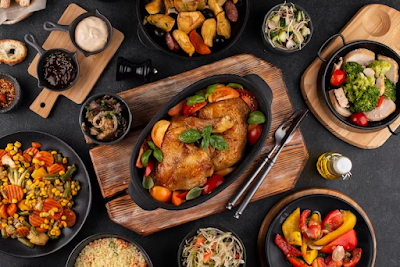All You Need to Know About Beverage Brand Photography
This post will discuss numerous ways to make the most of your food and Beverage Photographer San Francisco, whether you're a photographer striving to improve or a marketer who uses food photography.
In your opinion, what constitutes a good food photograph?
Creating a meaningful connection between the topic and the spectator is essential in food photography. One should expect a food photograph to:
Identify the food item accurately.
Make the viewer salivate and long for that specific food or drink immediately!
Pay attention to the meal in ways you normally wouldn't, such as noticing subtle flavors and sensations.
Create an imaginative image of the food item.
The photographer's role is to achieve these ends through the abovementioned techniques to evoke the desired emotional response from the viewer.
How to Improve Your Food Photography:
Due to the challenges, it presents, only a few photographers devote significant time to mastering the art of food photography. While it may initially seem challenging, obtaining high-caliber food images for promotional materials is rather simple. Yet a high-end studio and megapixel camera aren't always required (Although in the right hands, it helps).
Consider these guidelines the next time you're photographing food or products or selecting images for a marketing campaign:
The light:
It's at this point that a food photo either succeeds or fails. To begin, turn off your camera's flash! This will make the dish look like something out of a paparazzi photo shoot, guaranteeing that no one will want to eat it. Try to light the area using many off-camera strobes or, failing that, a large window that lets in filtered natural light. Do you mean the shadows aren't bright enough yet? Put your food on a white tablecloth and reflect some light onto it to bring out its natural color and flavor.
2. Angle:
You may get some great shots of food by changing your shooting angle. While rotating the camera slightly, please take photos of your food and see its dramatic effect. There is no better illustration of these methods than these Beverage Brand Photography San Francisco.
3. Construct:
Using a wider-angle photograph may allow the entire plate to be captured in the frame, but this does not guarantee a high-quality final product. If you try to get the whole dish in the frame, you photograph from too great a distance, missing the finer details and textures of the meal. Getting closer to the food in a photograph can make you feel more emotionally invested. Feel free to experiment with macro photography.
4. Depth of Field:
Using depth of field (the range of focus in a given photograph) effectively adds drama to food photography and directs the viewer's attention where it needs to go. In this case, the cake itself is the center point. Therefore, it is guaranteed that your attention will first be drawn to the cake and your feelings about it.
5. Accessories and Styling:
The last touch to a great food photo is the perfect presentation. Thus, make sure the salad is bright green, the meat is red and succulent, and the drinks are ice cold. The use of a linen napkin or a lime wedge can do wonders for making the food shot more appetizing. Salt added to carbonated drinks just before consumption makes them glitter. Vegetable oil spray improves the appearance of nearly every meat product. Misting fruits and vegetables with water gives them a more vibrant appearance.
Additional considerations:
Find out what you'll be photographing ahead of time. This will ensure you have all the necessary tableware, such as napkins, silverware, breadbaskets, etc. This will help you choose whether you want a sophisticated appearance or a homey feel.
Learn the specifics of your shooting environment, such as whether you'll use a studio or go on-site. You must have the necessary lighting gear, including strobes, umbrellas, soft boxes, and diffusers.
Conclusion:
Does it have the key elements of a great food photo, as outlined above? If this is true, your food photo will make many people hungry. And remember, when filming is over, you get to eat everything!

Comments
Post a Comment